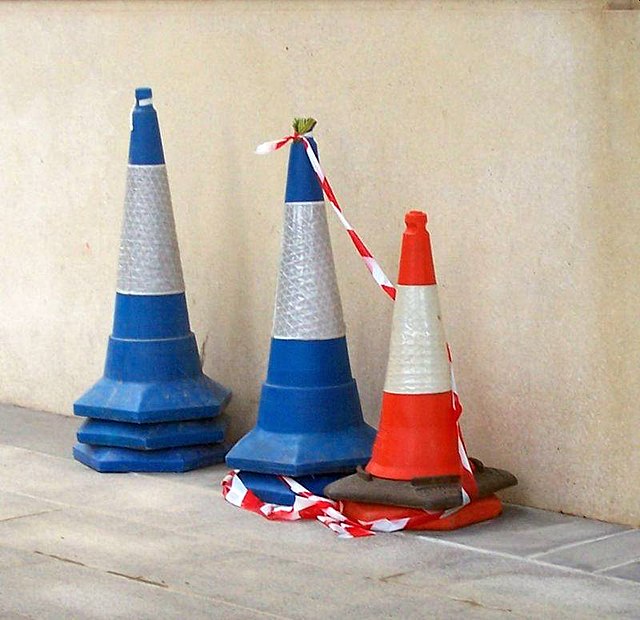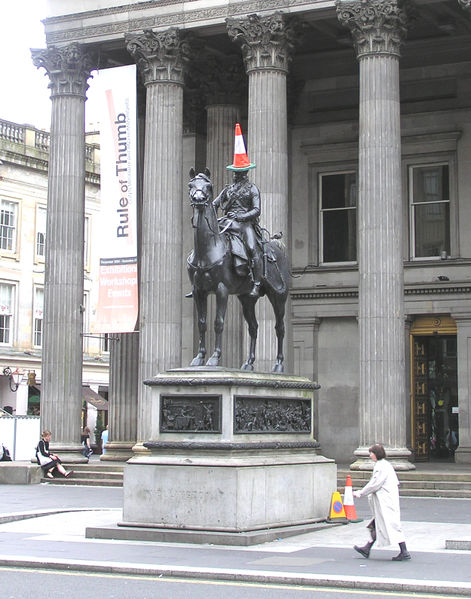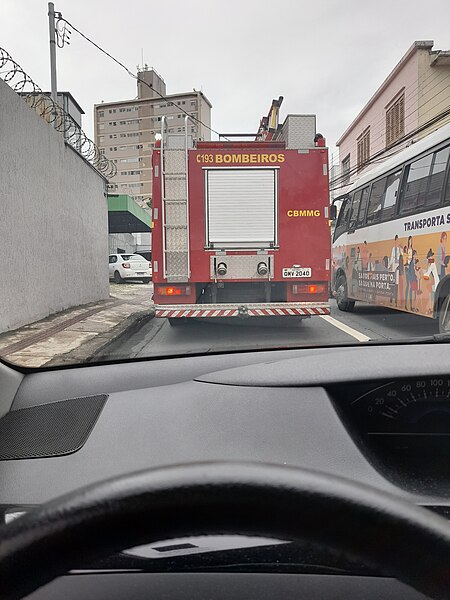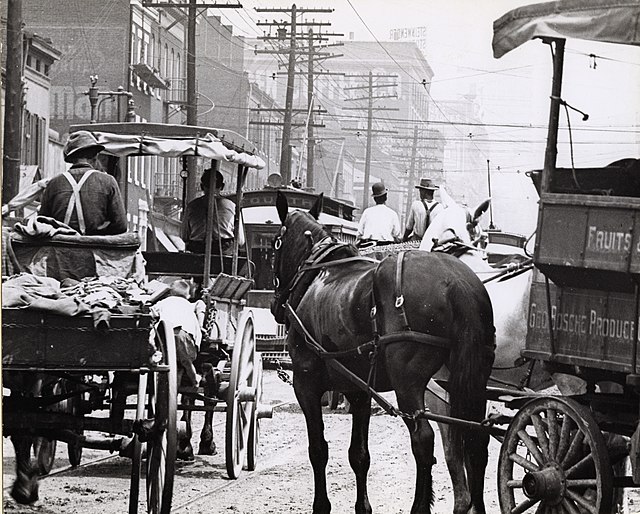Traffic cones, also called pylons, witches' hats, road cones, highway cones, safety cones, caution cones, channelizing devices, construction cones, roadworks cones, or just cones, are usually cone-shaped markers that are placed on roads or footpaths to temporarily redirect traffic in a safe manner. They are often used to create separation or merge lanes during road construction projects or automobile accidents, although heavier, more permanent markers or signs are used if the diversion is to stay in place for a long period of time.
Traffic cones are usually used to divert traffic. The reflective sleeves are for nighttime visibility; the bosses at the top ease handling and can be used for attaching caution tape.
Cones in use at the "Bridgegate" entrance to the George Washington Bridge in Fort Lee, New Jersey
Traffic cone on the right is used to indicate that no parking is allowed (UK)
Duke of Wellington statue, with cone (and reserve cones on standby)
Traffic comprises pedestrians, vehicles, ridden or herded animals, trains, and other conveyances that use public ways (roads/sidewalks) for travel and transportation.
Crossing from Fort Lee, Bergen County, New Jersey, into Manhattan in heavy automobile traffic on the George Washington Bridge, the world's busiest motor vehicle bridge, transporting approximately 300,000 cars and trucks daily across the Hudson River.
Traffic in Brazil
Congestion in St. Louis, Missouri, early 20th century
Traffic controller on Michigan Avenue in Chicago, Illinois








